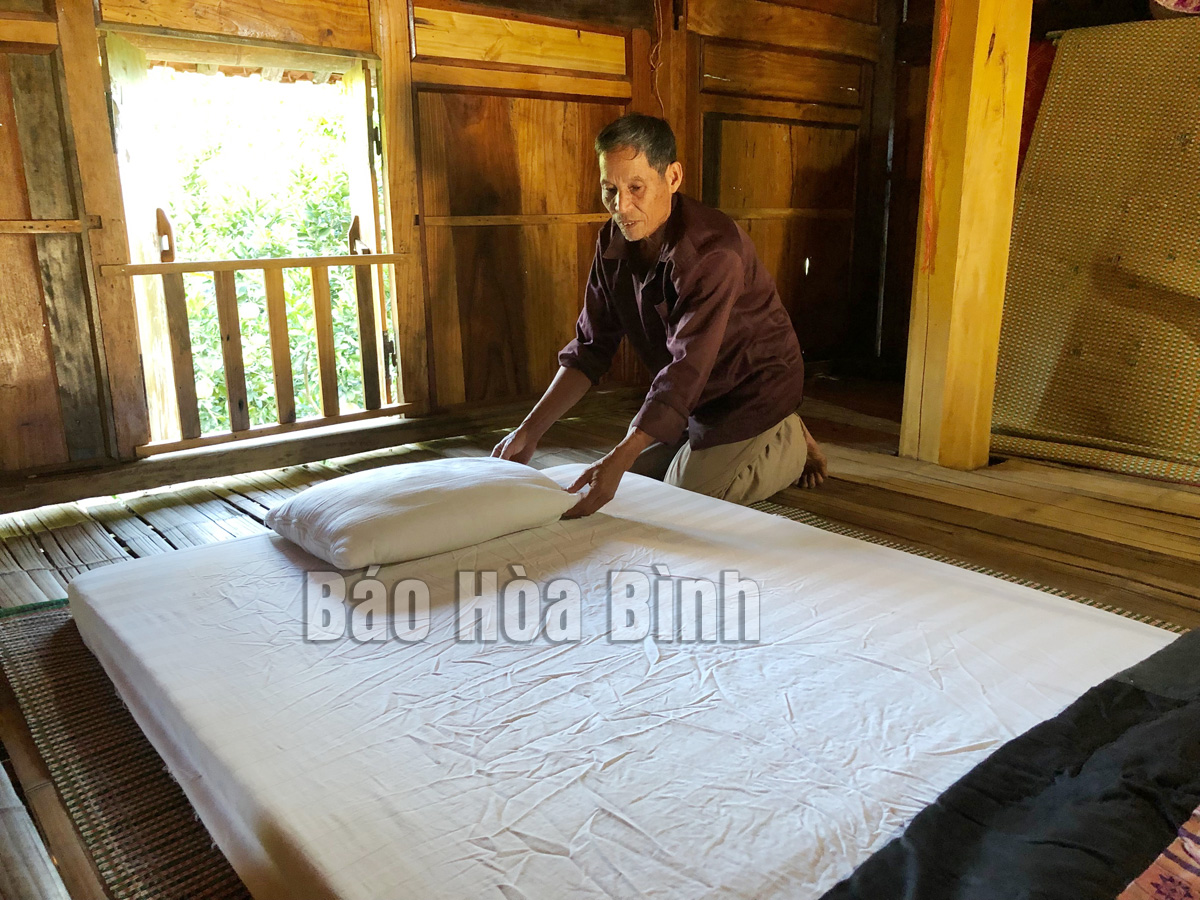(HBO) - As COVID-19 has been brought under control, many tourist destinations in Hoa Binh province will be able to welcome visitors again after a long time of closure.
Luy Ai village of Muong
ethnic people in Phong Phu commune (Tan Lac district) has repaired its roads
and prepared to serve tourists while applying preventive measures.
Dinh Cong Lon, a resident in Luy Ai village, Phong Phu commune (Tan Lac
district), straightens bedding sheets to prepare for serving tourists.
Lon’s family was among the first ones in Luy Ai
to offer homestay services. Their traditional stilt house, mainly to welcome
tourists, was repaired not so long ago.
Using bamboo material found around the house,
his family repaired the stair handrail, decorated pillars and raised the roof
to be more suitable for foreign tourists’ height.
He also pruned the garden, ornamental trees and
the fence to create a more beautiful look.
Lon said that the family has offered homestay
service since 2015. In the 2017-19 period, about five groups of tourists stayed
at their house each month and his family earned approximately 15 million VND
(660 USD) a month.
However, as COVID-19 emerged from the start of
2020, tourist arrivals declined to only three groups of domestic visitors per
month and they did not stay overnight. This year no tourists come at all.
When learning that tourist destinations will be
allowed to reopen, many local families began to raise more cattle and poultry
and grow more vegetables to serve holidaymakers.
All families in Luy Ai live in traditional stilt
houses and are highly aware of cultural traits conservation. They have
conserved their ethnic language, traditional costume and bamboo work tools.
The village has become a popular destination for
both Vietnamese and foreign visitors. As tourism activities will soon resume,
local people started cleaning up and growing more flowers at the roadsides, and
fixing parts of the fence damaged by the recent downpours.
The management board of the village set up
groups to clean up and repair the communal house,where musical performances
and folk games will be held.
Bui Van Nuc, Vice Chairman of the People’s
Committee of Phong Phu commune said that Luy Ai currently has three families
offering homestay services.
The village is planning to call on seven other
households meeting requirements to roll out the services. In addition, it plans
to provide visitors with experience in brocade weaving, catching fish in
streams and planting trees and rice, he said./.



